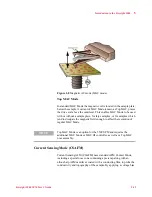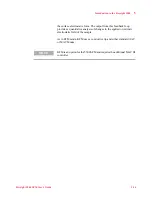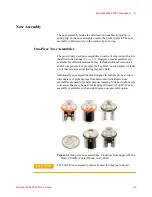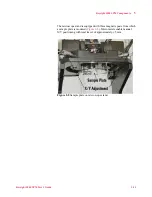
Introduction to the Keysight 5500
5
Keysight 5500 SPM User’s Guide
5-15
Magnetic Force Microscopy (MFM)
Magnetic Force Microscopy (MFM) probes the force between a
ferromagnetic tip and a ferromagnetic or paramagnetic sample to image
domain structures. The system detects changes in the phase of the
cantilever due to interatomic magnetic force that persists for greater
tip-sample separation than the van der Waals force.
A standard topography image can be collected for the same scanned
area, using AAC in Intermittent Contact mode. The two images can then
be displayed side-by-side to highlight any correlation between the
magnetic structure and topography.
Electrostatic Force Microscopy (EFM)
Electrostatic Force Microscopy (EFM) is a qualitative method for
examining changes in the intrinsic, or applied, electrostatic field of a
sample surface. A voltage bias is applied between the tip and the
sample, allowing local static charge domains and charge carrier density
to be measured.
The system detects changes in the phase response of the cantilever
which are induced by the interaction of the conducting tip and the
electrostatic field of the sample surface. EFM images are usually
obtained by monitoring the phase change of the cantilever oscillation at
the applied frequency.
A standard topography image can be collected for the same scanned
area, using AAC (or MAC) in Intermittent Contact Mode. The two
images can then be displayed side-by-side to highlight any correlation
between the electrostatic response and topography.
Kelvin Force Microscopy (KFM)
Kelvin Force Microscopy (KFM) is similar to EFM, but with the
addition of a feedback loop to maintain a DC tip bias that counteracts
NOTE
MFM requires AAC, MAC, AAC III or MAC III controller.
NOTE
EFM is an option for the 5500 SPM and requires the additional MAC III
controller.













































